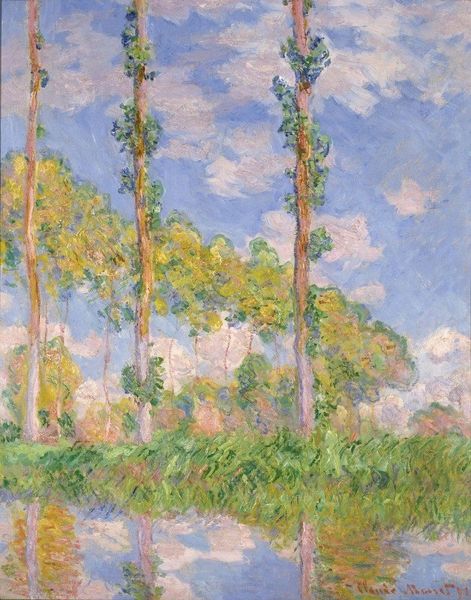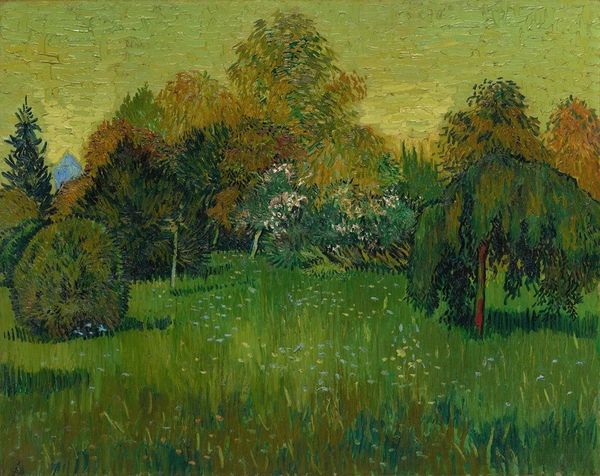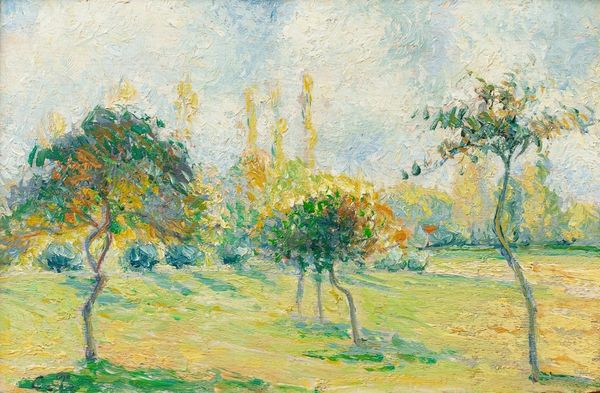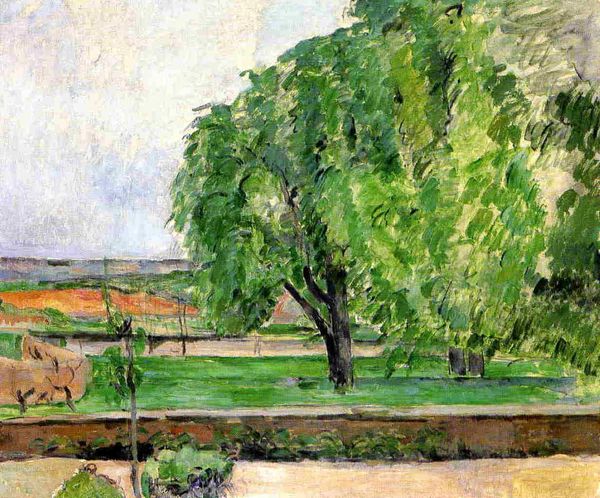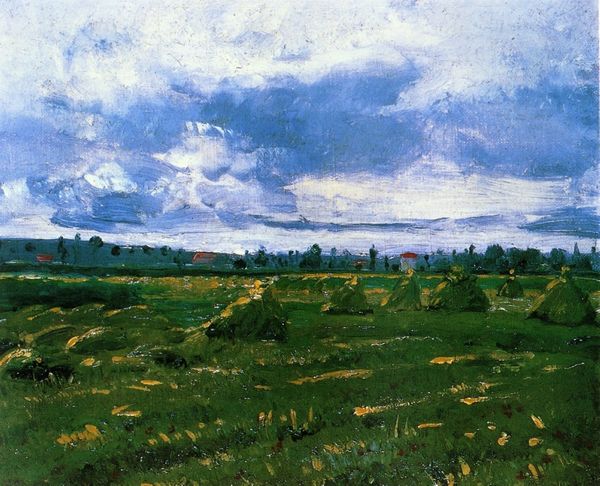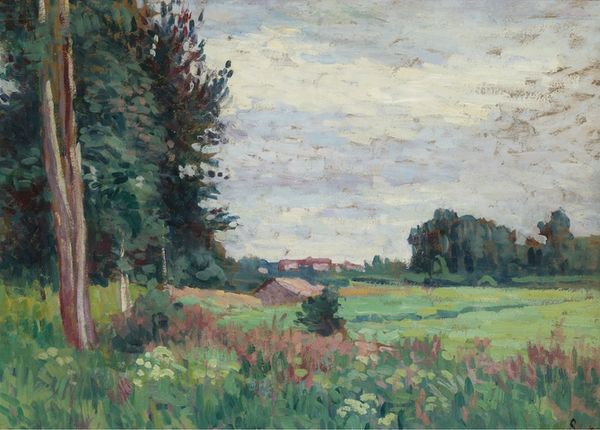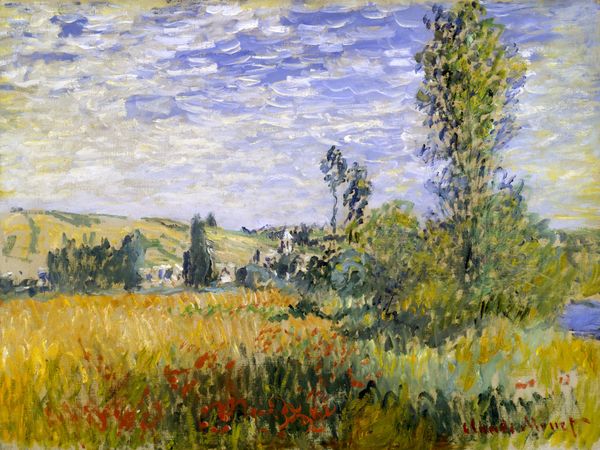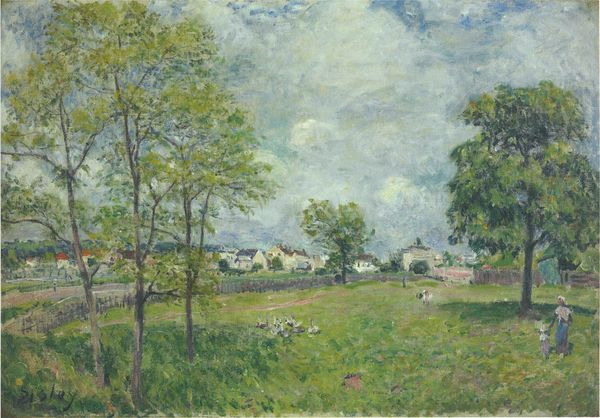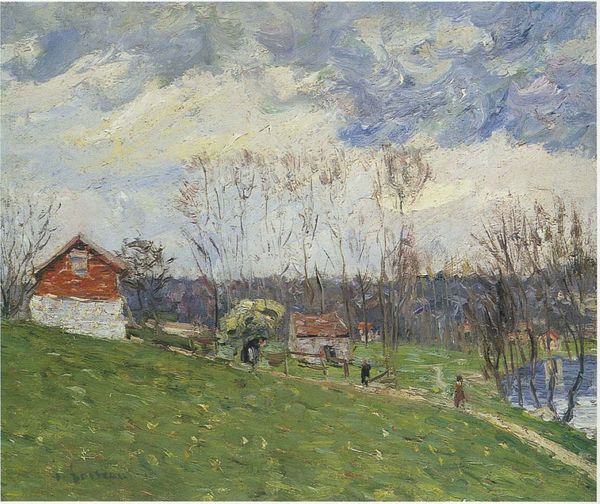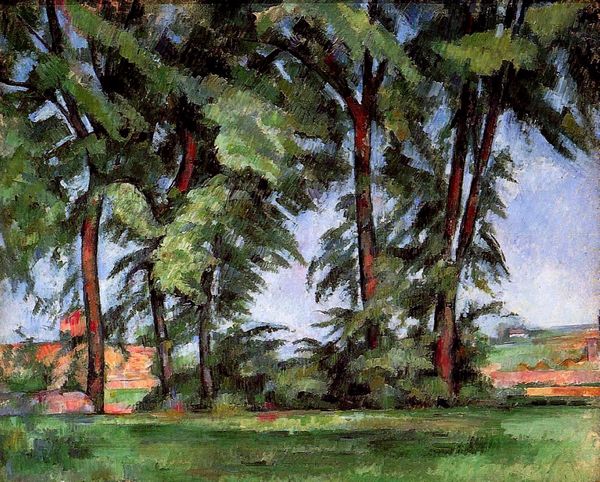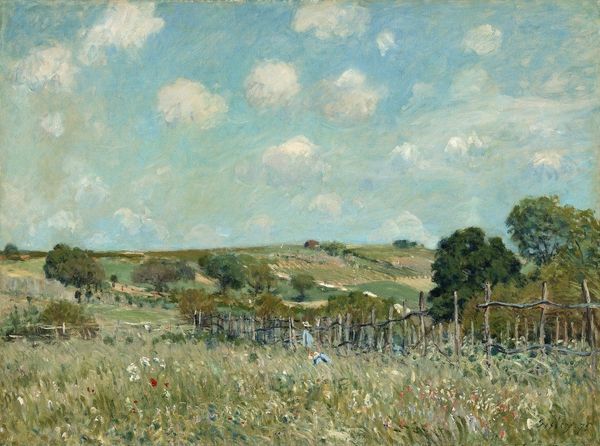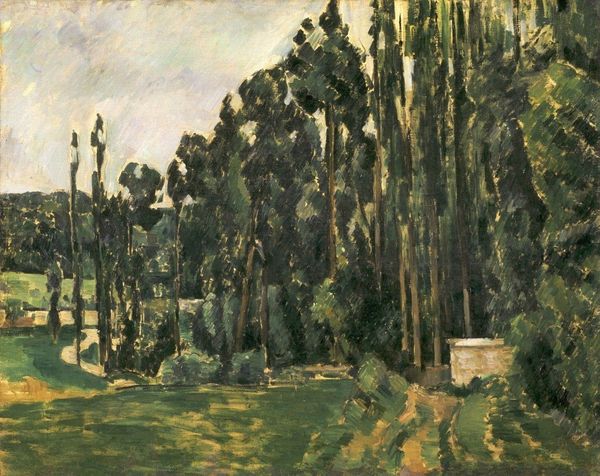
painting, plein-air, oil-paint
#
painting
#
impressionism
#
plein-air
#
oil-paint
#
landscape
#
oil painting
#
realism
Dimensions: 37.8 x 46.1 cm
Copyright: Public domain
Editor: Here we have Berthe Morisot's "Landscape of Creuse," painted in 1882. It’s an oil painting, a landscape with trees in the foreground and buildings further back. It has a breezy, carefree feel to it. What captures your attention about this piece? Curator: What interests me is how Morisot foregrounds the materiality of the paint itself. Look at the visible brushstrokes. This wasn’t just about representing a landscape; it was about the *act* of painting and the labor involved. How does the landscape as a commodity figure into that process, given that paintings are sold and become private property? Editor: I see what you mean. It does feel immediate, like she was capturing a fleeting impression rather than meticulously crafting a scene. How does this connect with Impressionism's broader engagement with modernity? Curator: Well, think about what's being produced: rural scenes for an increasingly urban audience. These landscapes become objects of consumption, tokens of a simpler, pre-industrial life even as industrialization fundamentally alters those very spaces. Is there anything else you think contributes to the overall effect? Editor: The quick, light strokes perhaps? They de-emphasize realistic representation. This allows the materials, like the color pigments suspended in the oil-paint to shine through more. It definitely feels less concerned with portraying an objective reality and more concerned with the subjective experience. Curator: Exactly. This piece also reflects a democratization of art making; plain air allowed the artworker more independence, less reliant on wealthy clients for both patronage and material provisioning in the atelier. Editor: That is something I had not thought of; it is amazing to look at art in terms of how it frees the maker and represents the landscapes for consumerism. Thank you! Curator: You're welcome, my friend. It's about appreciating how social contexts and the work of creation shape our perceptions and experience with the art object itself.
Comments
No comments
Be the first to comment and join the conversation on the ultimate creative platform.
